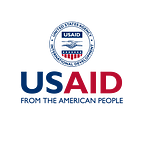Trafficked Youth Now Lives a Life of Possibility
USAID project helps rehabilitate vulnerable youth in Uganda
The road leading to the Kobulin Youth Training Center in Napak, in northeastern Uganda, winds through pastoral fields, ending at a sun-speckled yard with lush vegetation and simple houses. The air is still, occasionally accentuated with laughter and quiet talk coming from some of the huts. This is a place of peace and safety.
Many of the youth living here come from the streets of Kampala, or other places in and outside of Uganda, where they toiled day and night to survive, enduring physical and psychological abuse.
Mark Ariko, now in his 20s, came to Kobulin after having spent most of his childhood selling fruits, vegetables, and miscellaneous items in busy intersections of Kampala.
“When I was 5 years old, my mother was persuaded to take us from Karamoja to Kampala. Life was very hard. We sat day after day in the sunshine, begging and picking scraps to sell, so we could earn a living,” said Mark. “Each evening, we slept in a nearby slum.”
For young people who used to peddle on the streets to earn money for their families or were sold for human trafficking, Kobulin — a governmental youth rehabilitation center — is a haven that enables them to chart a new course in life.
In 2018, USAID started supporting Kobulin’s ongoing work with vulnerable youth through the Nuyok program, implemented by Catholic Relief Services, providing 14- to 25-year-old young women and men psychosocial support and vocational training in metal work, carpentry, baking, agroforestry, tailoring, and hairdressing. More than 300 vulnerable and traumatized children and youth — 65 percent of whom are female — have since learned a new profession and received support to heal from trauma.
“Most of the population in the center are girls and women. Some are child mothers and child-headed families,” said Moses Kale, the Nuyok project mobilizer. Many of these girls were recruited to go to “work” in Kampala through peer pressure. Some ran away from home, but, sadly, some girls were sold to agents by family members or taken by traffickers.
While boys and young men become targets less often, they too can become victims — and face painful consequences.
Mark is among the many children who become victims of child labor in Uganda. According to the U.S. Department of State 2020 Trafficking in Person Report, human traffickers in Uganda exploit children as young as 7 years old. Both girls and women aged 13–24, as well as boys, are targeted for commercial sex. It is estimated that there are between 7,000 to 12,000 children exploited in sex trafficking in Uganda. Many of the victims are Ugandans from Napak in Karamoja, the poorest district in Uganda.
When a local child protection program brought Mark to the Kobulin Center, his life took a new turn. “I enrolled in a training program on agroforestry and after six months completed exams and got a certificate,” Mark recounted.
This opened an opportunity for him to secure a volunteer job with an international charitable organization training community members to plant trees. With the stipend he received for his efforts, he bought himself a plot of land — the first possession he ever owned.
Supporting vulnerable youth with vocational skills and livelihood opportunities is a key component of the USAID program. Job training and psychosocial coaching help the youth to find a way back, but returning to where they left from is not simple. “The youth go back to their villages or end up going back (e.g., to the streets in Kampala) two or three times,” said Moses.
Mark Ariko knows the challenges firsthand. “Life was very hard — making friends, finding a place to sleep, everything,” he said.
Despite multiple obstacles, the Kobulin Center exposed him to possibilities and hopes that he didn’t previously have. “I am still struggling, but I continue to learn and I constructed a hut I live in,” Mark said with determination. “My dream is to become a veterinarian doctor and to grow food for the communities where there isn’t enough.”
Half of the families in Karamoja don’t have enough food to sustain their children, which is likely one of the main factors behind the level of child trafficking in the region. However, the issues are complex and not well understood. Accordingly, USAID is also supporting the Gulu University Constituent College in Moroto to conduct research that will help local leadership understand the root causes of the problem, identify solutions, and find ways to stop the exploitation of children and youth, ultimately contributing to a healthier, more just, and stable community.
About the Author
Anna-Maija Mattila-Litvak is Supervisory Development Outreach and Communications Officer at USAID’s Mission in Uganda. She specializes in journalism, photography, and communicating about international development and why it matters. Follow @USAIDAfrica for more.
